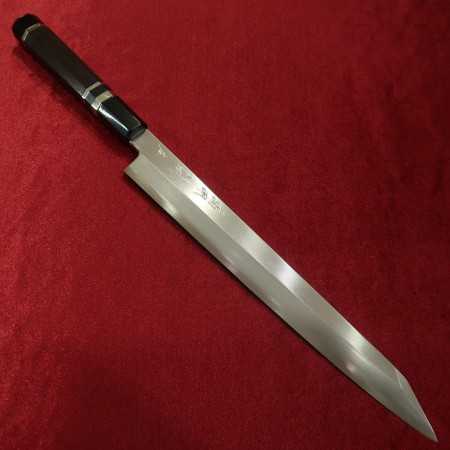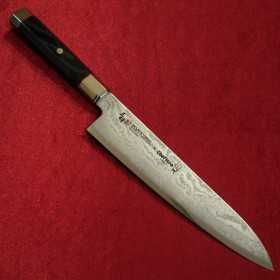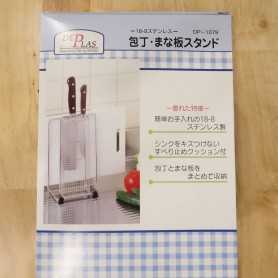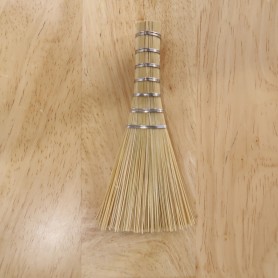【Chef Hiro&Miura do a collab】Japanese Kandokoro Sashimi Yanagiba Knife - Ginsan stainless steel - Ebony wood handle - Size:27cm
This knife is produced by Chef Hiro has over 11 million total SNS followers for chefs whose specialty is Japanese cuisine all over the world.
A talented, skilled and individual blacksmith, Satoshi Nakagawa who learned at Shiraki Hamono, experts of stainless forging in Osaka, forged this line.
His technique of forging is outstanding even in Osaka where is the main producer of traditional high carbon single bevel knives.
Shotaro Nomura, a master sharpener, finished this special knife using his experience and traditional skills.
Sashimi-Yanagiba is Knife to cut sashimi and sushi beautifully
Kandokoro Kiritsuke Sashimi style has a steeper angle on the tip than usual kiritsuke.
Spec
As each knife is handmade, the size, weight, and finish of the blade may vary.
| Knife: | 27cm |
| Overall Length: | 418mm |
| Blade Length: | 270mm |
| Blade Height at base (at heel): | 34mm |
| Blade Thickness above heel: | 3.88mm |
| Weight: | 219g |
Blade
- Construction: Awase- Ginsan hagane forge welded on stainless steel (2 layers)
- Grind: Double-edged: Single Edged Blade for right-handed
- Brade Material: Ginsan-Silver 3 Stainless steel/Stainless steel
- Shape: Kandokoro Kiristuke – Tip like Concorde's beak
- Blade Finish: Kasumi Kido finish
Handle
- Handle material: Ebony Wood with Nickel Silver Ring
- Shape: Octagonal for easy gripping
- Ferrule: Buffalo Black horn
Blacksmith: MASTER OF TRADITIONAL CRAFT -Satoshi Nakagawa
Sharpener: MASTER OF TRADITIONAL CRAFT- Shotaro Nomura
Brand: Miura OBIDAMA
Series: Hiro
Made in Sakai, Osaka, Japan
About Ginsan
Ginsan is developed by Hitachi steel. It contains 1.05 percent of carbon, 13 percent of chromium and 0.8 percent of manganese. The steel is excellent for a kitchen knife because it is pure, and its molecules are small. The steel is traditionally used in a professional kitchen in Japan that requires sharpness. Hitachi Steel makes high carbon steel called White Steel and Blue Steel, while Silver Steel was invented as a stainless steel. Ginsan is especially hard because it contains more carbons.
Its potential hardness is 59 to 62 at HRC scale. This is not bad even compared to high carbon steel. Its sharpness is like biting more, and easy to resharpen. For sure it does not rust like White Steel and Blue Steel as it is stainless. Forged Ginsan stay sharp longer than the other stainless steel.
In summary, Ginsan steel is stainless, sharp and has a good edge retention. The steel is perfect for a chef who works in a very busy kitchen and sushi chef who uses a lot of vinegar.
Ebony Handle
The highest quality knife handle made of ebony, which is hard, water-resistant, and durable beyond compare, with a buffalo black horn ferrule and silver nickel wrapped around it.
Please be careful!
・Please note that there may be individual variations in shape, finish, and color due to the handcrafted nature of our knives and the use of natural materials for the handles.
・Do not cut frozen foods or bones with knives that are not specifically designed for that purpose. Doing so can cause significant damage to the blade.
・Do not use a dishwasher for cleaning. It may cause rust and damage to the handle.
・After use, do not leave the knife dirty. Hand wash it with a neutral detergent and then remove any moisture.
・Carbon steel knives are extremely prone to rusting, so clean and dry them promptly. When storing, apply camellia oil to the blade.
・Avoid using simple sharpeners as they can damage the blade. If you must use them, please follow up with maintenance using a whetstone.















feedback Report comment